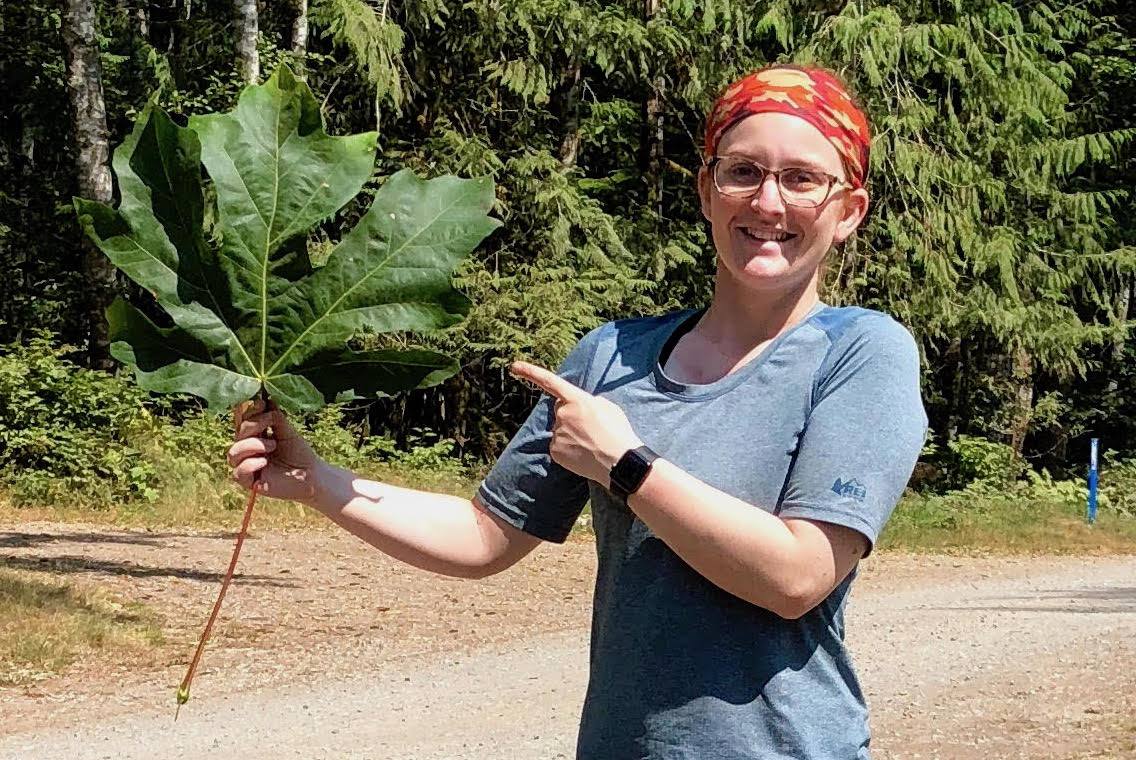Since it’s the DNA inside the leaf that we and our partners at the World Resources Institute are focused on––and that will help identify illegally harvested timber––it’s nice to have a reason to step back and admire the grandness of a tree as a whole.
Here, Kelsey gives the background on finding and sampling this tree near a campground along a popular lakeshore in one of Washington’s National Forests.
It was a hot day, so the lake was very busy with people swimming, paddle boarding, jet skiing, etc. We had just been backpacking for two nights, so one of my friends took a dip in the lake while I looked for the right tree. I had only been to this lake in the winter, so I hadn’t seen the leaves before. It has a lot of those super mossy, mysterious-looking trees. I bet a lot of them were bigleaf maples.
I had just collected a sample at nearly 3000-ft elevation, which was hard because a lot of those trees are quite small, so I was excited to go down to the lake, which seemed like it would be a perfect location for bigleaf maples (low elevation, lots of water).
I remember looking at all of the “disappointing” normal sized bigleaf maples. Then there was this tree, which had many large trunks––at least four must have been way over the 75cm size requirement for sampling for the project. The other trees in the area had single trunks all smaller than the one I sampled.
Since I had made my friends wait while I found the very best tree, I logged the info, took the leaf, and hurried back to the car. I had been hoping to take advantage of the site to find the biggest tree so far, which I don’t think actually happened, but getting the biggest leaf instead was worth it.
The stem of the leaf was like a branch!
There are many more stories to tell from our Timber, Pollinator, and other projects this summer. Be sure to follow us on Facebook and Instagram to keep up. And if you’re out there participating, let us know if you have a story to share!

